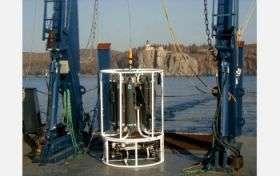Nitrate in Lake Superior: On the Rise

Nitrate levels in Lake Superior, which have been rising steadily over the past century, are about 2.7 percent of the way toward making the lake's water unsafe to drink, according to a study by University of Minnesota (UMN) researchers.
The study, funded by the National Science Foundation (NSF), is published online this week in the journal Geophysical Research Letters.
The complexity of the causes underlying the increase makes it difficult to predict when the water could become unhealthy. The trend is a concern because Lake Superior contains 10 percent of the Earth's supply of surface fresh water.
Although everyone is exposed to small, harmless amounts of nitrate from eating fruits and vegetables, nitrate contamination of drinking water can expose people to harmful levels.
Too much nitrate can reduce blood levels of oxygen, which poses a risk to infants and children or adults with lung or cardiovascular disease. Consuming excess nitrate over long periods of time is also suspected of causing cancer.
A compound made from nitrogen and oxygen, nitrate is a component of agricultural fertilizers and is generated by fossil fuel combustion. Nitrate in Lake Superior has increased about five-fold since the earliest measurements in 1906.
This level of nitrate doesn't reflect either post-World War II increases in fertilizer and fossil fuels, which would tend to increase levels faster, or the effects of the Clean Air Act of 1972, which would likely decrease levels, says Robert Sterner, a limnologist at UMN and lead author of the study. Sterner was recently appointed director of NSF's division of environmental biology, and will be on leave from UMN.
Because of Lake Superior's vast size, the lake registers change slowly and converts other forms of nitrogen within the lake--in decaying plant matter and sewage--into nitrate.
"We're still a long way from drinking water advisories based on nitrate for Lake Superior, but it's not too early to give this situation more attention," Sterner says. "We cannot easily or quickly reverse trends in this enormous lake."
"This study of Lake Superior tells us that if we ignore results of basic research on lakes and the changing biochemistry of their waters, we do so at our own peril," says Don Rice, director of NSF's chemical oceanography program, which funded the research.
Source: NSF





















